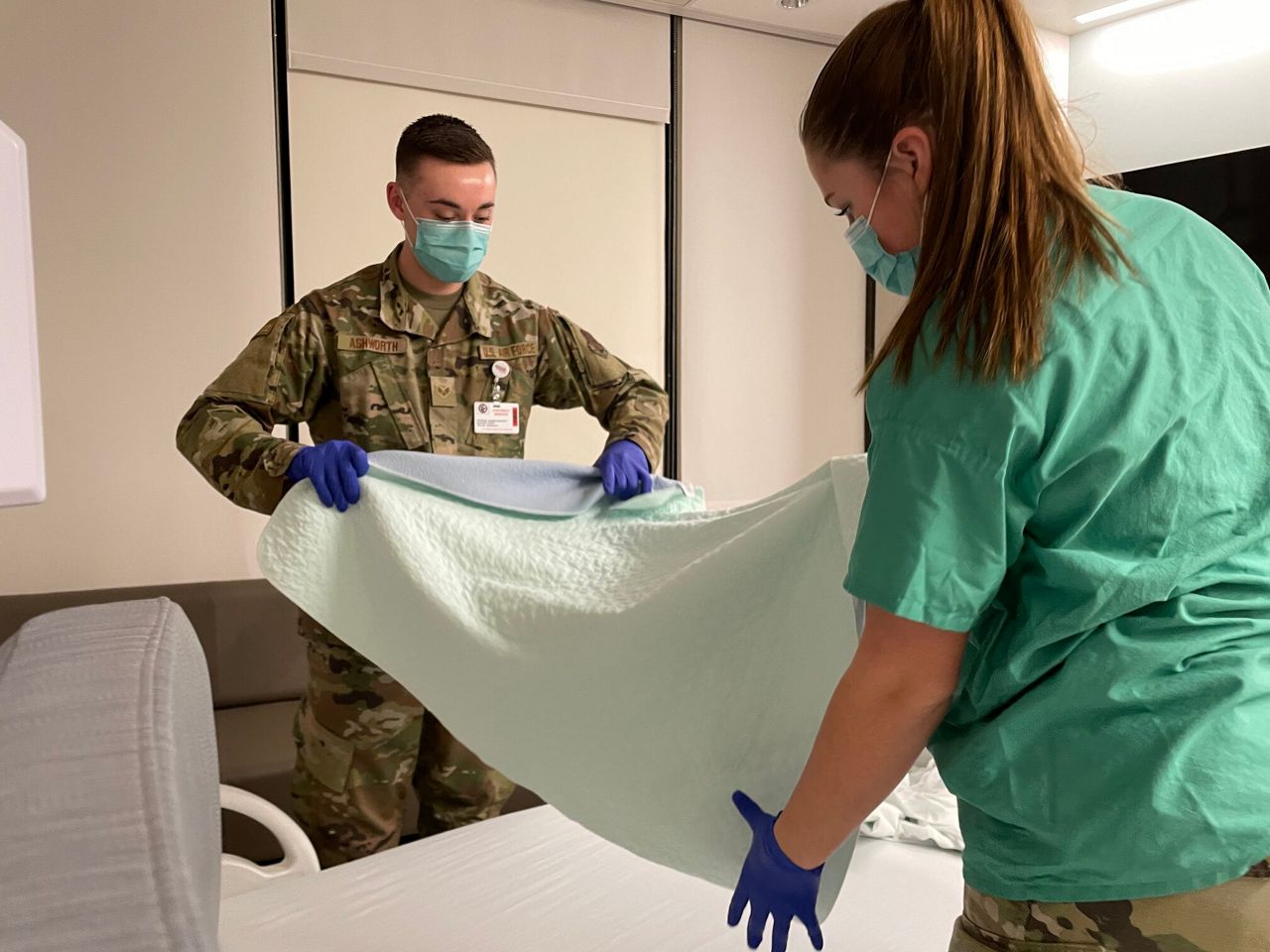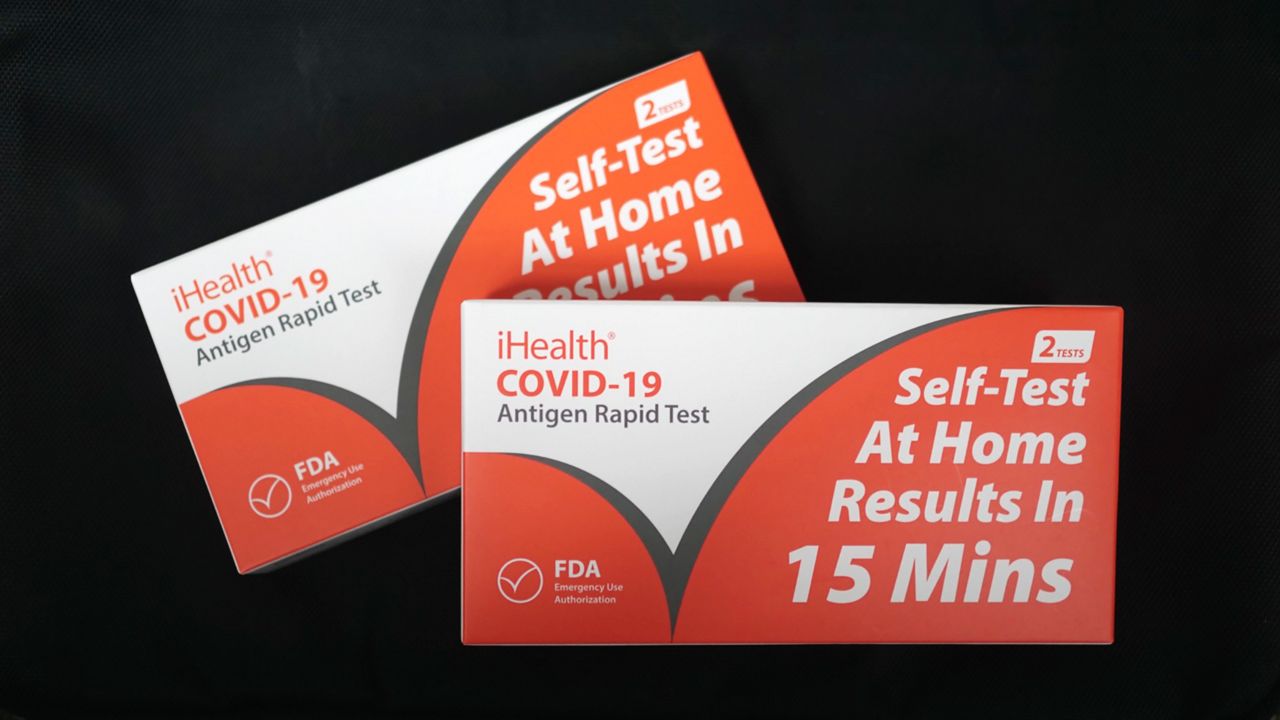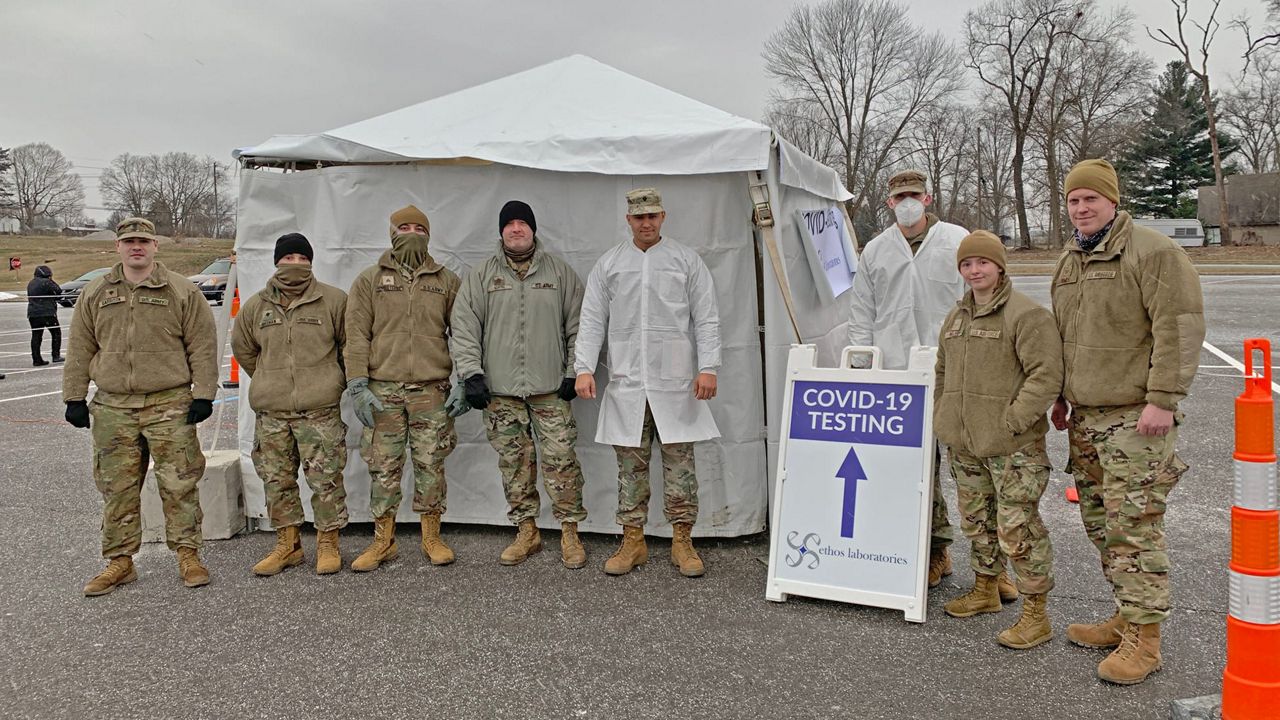COLUMBUS, Ohio — The Ohio National Guard’s support is coming to an end Tuesday at the last two health systems where service members added staffing as part of a mission to help with operations at hospitals and testing centers during the omicron surge.
What You Need To Know
- The Ohio National Guard's COVID-19 surge support mission will end Tuesday, officials said
- Ohio Gov. Mike DeWine deployed nearly 2,400 service members to hospitals and testing sites
- A hospital official expressed thanks for the National Guard's support and hope it won't be needed again
The National Guard finished its withdrawal from testing operations on Friday, the last day service members worked at nine test centers.
National Guard teams supporting ProMedica in Toledo and Miami Valley Hospital in Dayton finish their service at the hospitals Tuesday, following the Guard’s departure from Mount Carmel East Hospital in Columbus Monday.
Their departures bring a closure to the two-month mission that involved nearly 2,400 Ohio National Guard and State Defense Force members, one of the largest hospital deployments by a state governor during the omicron surge.
The deployment included medical personnel who performed clinical roles in hospitals during the surge, but most of the Ohio National Guard members performed non-clinical tasks in a range of areas where the hospitals needed staffing, including transport services, food services, environmental services, as well as working testing sites.
“The Ohio National Guard members who have been supporting these remaining testing centers and hospitals will be demobilizing this week and returning to their families and civilian obligations,” spokesperson Stephanie Beougher said Monday.

Dr. Scott Wilber, Mount Carmel’s chief medical officer, said 210 National Guard members supported the health system during the mission. On Sunday, Mount Carmel East Hospital closed a 28-bed surge unit that was open for four weeks and treated 130 patients from all over central Ohio.
"During the period of time from Thanksgiving roughly through the end of January, we saw this really dramatic surge in COVID patients, and at the same time, our employees, many of them also were exposed to, or contracted COVID during that time. So we had a number of employees that were out as well," Wilber said. "The National Guard came at just the right time for us."
The guard's staffing support gave the hospital the resources to open the surge unit and take transfers from other hospitals, easing the strain of the virus throughout the region, Wilber said. National Guard medics who worked at East Hospital made an impact in the emergency department, providing much needed support triaging patients at the height of the virus wave, he said.
"When we were at the peak of the surge, the emergency department volume was very high. We had many people waiting in the waiting room, and they went out and took vitals for us, and helped us keep an eye on all those people in the waiting room waiting to get back to be seen," Wilber said.
When Gov. Mike DeWine announced he was deploying the Ohio National Guard on Dec. 17, he said the service members would support Ohio hospitals as long as it was needed. The purpose of the mission was to relieve the staffing strain from the number of hospitalized virus patients.
They began their testing support at the Walker Center in Cleveland the week of Christmas. The first hospital deployments were in northeast Ohio. As the virus spread, deployments were announced in every region of the state.
Ohio Maj. Gen. John C. Harris Jr. said last month that no one in the National Guard would expect to work a mission like this when they’re recruited, but he said all of the deployed service members understood what needed to be done when they were called for the hospital mission.
“They did this over the holiday season, and quite frankly, when we called them, they didn’t flinch," he said.
At the peak of the mission, the National Guard was deployed at 62 hospitals and 18 testing sites throughout the state.
Some of the testing centers that received support closed upon the departure of the National Guard, while others will continue to operate with less staff.

UC Health in Cincinnati said last week it transitioned its testing operations from a drive-thru site to in-office testing after the deployment of 10 Guard members who supported the mass testing site came to an end. Hamilton County health officials had asked for the National Guard to continue supporting testing sites for the week following the Super Bowl, just in case there was a spike in the Cincinnati area after watch parties.
As large testing sites close, officials are noting home tests are increasingly available, in part due to the declining case numbers.
In Clark County, officials said Friday that the health department would not continue its drive-thru testing site that was supported by the Ohio National Guard, but they would instead offer at-home tests for pickup at their main office.
Ohio residents who have requested tests through the federal ordering system are now receiving their deliveries, and the Ohio Department of Health is also sending home tests to schools, libraries and community centers to distribute at no cost. At the peak of the surge, pharmacy testing appointments were booked out for days in some areas, but appointment availability has significantly improved.
COVID-19 hospitalizations in Ohio peaked at an all-time high on Jan. 10 at 6,749, and in late January the state had the highest rate of new deaths in the country. As of the latest update Monday, COVID-19 hospitalizations were down to 1,517, according to state data.
Wilber said Mount Carmel is hopeful it won't need the support of the National Guard again to deal with COVID-19 patients, encouraging residents to get vaccinated to help avoid that possibility.
"We have seen a significant decrease in our COVID patients over the last several weeks, and we're now down to a lower level. Although we're at a lower level, we're still very concerned and keeping an eye on the community transmission, and we'll be prepared for another surgeon if one were to come," he said.



